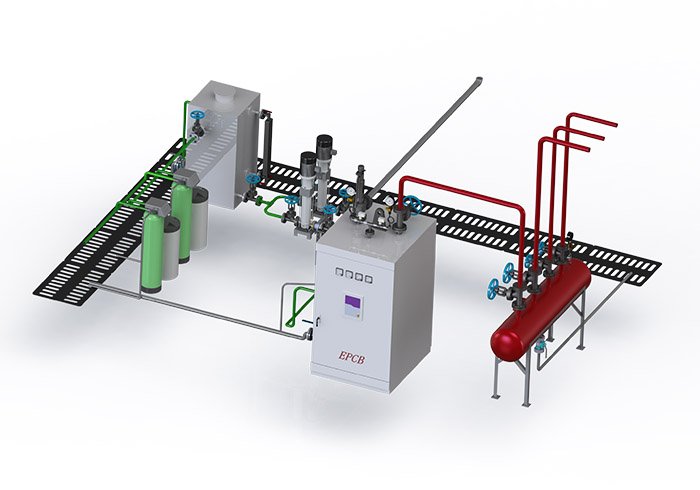In today's era when the manufacturing industry is constantly pursuing high efficiency and low carbon, industrial steam boilers, as key equipment for energy conversion, are playing an irreplaceable role. It is not only the power core to drive the production process, but also plays an important role in optimizing energy use and reducing operating costs and carbon emissions.
As a manufacturer with decades of deep accumulation in the field of industrial boilers, EPCB boiler has always been at the forefront of energy transformation. With its in-depth understanding of steam technology and flexible integration of various energy forms, EPCB boiler is committed to providing efficient, environmentally friendly and intelligent boiler solutions for different industries.
Then, can steam boilers really achieve sustainable development while improving industrial operation efficiency?
In this article, EPCB boiler will give you an in-depth understanding of the core principle of steam boilers, energy conversion process, common types and their wide applications in various industries, and focus on how EPCB can lead the boiler system to develop in a more efficient, cleaner and smarter direction through technological innovation.
Basic Principle of Industrial Steam Boiler
What is an industrial steam boiler?
Industrial steam boiler is a system that heats water by fuel (such as natural gas, heavy oil, biomass or electricity) to generate steam. This process seems simple, but it is of great significance in industrial application: water absorbs heat energy in the boiler, converts it into high-temperature and high-pressure steam, and then transports it to the production line to provide the required heat energy or mechanical power for various technological processes.
As a heat transfer medium, steam has the characteristics of large heat capacity, high heat transfer efficiency and easy control, and is widely used in manufacturing, power generation, pharmacy, food processing and other industries. For example, in food processing, steam is used for sterilization and cooking; In the pharmaceutical industry, steam realizes aseptic production; In power plants, high-pressure steam drives turbines to generate electricity.
As a professional industrial boiler manufacturer, EPCB boiler is well aware of the strict requirements of different industries for steam system performance. From standard boilers to customized energy systems, EPCB boiler is committed to providing customers with safe, reliable, high thermal efficiency and easy maintenance steam boiler products. Our rich industry experience and engineering ability ensure that each boiler can run stably and continuously output high-quality steam, creating long-term value for users.
Read More:How Do Industrial Steam Boilers Work?
Importance of steam in modern industry
In modern industry, steam is not only a heat source, but also the core guarantee of many precision production processes. For example, in pharmaceutical and food industries, steam is widely used for sterilization and cleaning, which requires that the temperature must be accurately controlled to ensure product quality and hygiene and safety. In the process of chemical synthesis, the slight fluctuation of temperature may affect the reaction rate and product purity, and steam provides an ideal temperature adjustment method with its good controllability.
In addition, steam is also an important carrier of thermal energy drive system-for example, steam drives turbines to realize mechanical energy conversion, which is widely used in cogeneration and large industrial equipment.
With the increasing attention of enterprises to the goal of sustainable development, the demand for energy-saving steam solutions is also growing rapidly. More and more industrial users are looking for steam systems with higher thermal efficiency, lower emissions and more intelligent control to reduce energy consumption costs and carbon footprint.
Understand the Energy Conversion of Steam Boiler
The core mission of industrial steam boiler is to effectively convert chemical energy in fuel into heat energy in steam.

Energy transformation
The energy conversion process of steam boiler begins with fuel combustion. When fuel (such as natural gas, heavy oil, biomass, etc.) is mixed with air, it burns in the furnace and releases a lot of heat energy. This heat heats the water in the boiler through the heat transfer surface, and finally generates high-temperature and high-pressure steam for industrial production.
EPCB boiler has made great efforts in energy conversion efficiency. We use optimized combustion chamber and high-efficiency burner to ensure that the fuel burns fully in high temperature environment, release as much chemical energy as possible and reduce combustion loss. Through the intelligent combustion control system, the boiler can automatically adjust the supply ratio of fuel and air according to the load, and maintain an ideal combustion state, thus achieving maximum thermal energy output and minimum energy consumption.
Heat energy transfer principle
The high efficiency of steam boiler depends not only on combustion efficiency, but also on the way of heat energy transfer and structural design. Heat transfer surfaces, such as fire pipes, water pipes and convection heating surfaces of boilers, are the key bridges for heat transfer from flame to water.
EPCB boiler adopts multi-stage heat transfer structure with optimized configuration, such as internal and external double-threaded flue pipes, corrugated furnace liners, flue gas return system, etc., to ensure that heat is fully absorbed, and at the same time reduce the exhaust temperature and energy loss.
In addition, we also pay special attention to the thermal insulation structure of the boiler body. High-density insulation materials and double-layer shell design are adopted, which greatly reduces the loss of heat energy in the conduction process and improves the overall thermal efficiency.
Key efficiency factors
Ratio of fuel to air: A proper air excess coefficient can ensure the full combustion of fuel and avoid heat loss caused by excessive air.
Burner technology: EPCB adopts low nitrogen and frequency conversion control burner technology, which can adjust the flame shape and output power according to the working conditions to improve adaptability and energy efficiency.
Thermal insulation and sealing performance: Good boiler thermal insulation structure and sealing design can avoid heat loss and air leakage and improve the overall stability of the system.
Exhaust gas temperature control: waste heat is recovered through economizer and condenser, which effectively reduces exhaust gas temperature and improves heat energy utilization.

Fire-Tube boiler
Fire-tube boiler is a kind of steam boiler with relatively simple structure but extremely reliable. Its design principle is that hot gas flows through a plurality of smoke pipes arranged in the boiler shell, and water surrounds these smoke pipes. Heat is transferred from flame and smoke to water, producing steam.
This design is very suitable for small and medium-sized steam demand occasions, such as food processing, washing industry, small manufacturing plants and so on. Because of its compact structure, fast start-up and smooth operation, the fire tube boiler is usually regarded as an operation-friendly equipment.
EPCB boiler's fire tube boiler products have excellent durability and thermal efficiency, equipped with intelligent control system and high-quality burner, which can meet the demand of high-frequency steam continuously and stably, and are the first choice for many enterprises.
Water-Tube boiler
The design of Water-tube boiler is just the opposite to that of fire-tube boiler. Its core is that water circulates in a series of pipes, which are surrounded by high-temperature combustion gases. Heat is transferred to water through the pipe wall, which makes it quickly heated and converted into steam.
The most prominent advantage of water tube boiler is that it can withstand higher steam pressure and provide greater steam output. Therefore, it is widely used in large industrial facilities, such as chemical plants, power stations, petroleum refining and metallurgical industries.
EPCB 's water-tube boiler adopts optimized water circulation system and multistage safety protection devices, which can maintain excellent thermal stability under large-scale load changes. At the same time, through efficient combustion technology and waste heat utilization system, energy waste is greatly reduced, which is an ideal choice in high-load application scenarios.
Electric boiler
In some industrial places with strict emission control or limited space, Electric Boiler has become a more ideal choice. The electric boiler directly heats water by electric energy to generate steam, which is completely independent of fuel combustion, so it almost realizes "zero emission".
This type of boiler is especially suitable for pharmaceutical, food processing, laboratory and other fields that require extremely high environmental cleanliness and temperature control accuracy. At the same time, it also has the characteristics of compact structure, convenient operation and simple maintenance.
The electric boiler products introduced by EPCB adopt high-quality electric heating elements and intelligent temperature control system, which can realize rapid response and precise control, and help users to obtain stable and reliable steam supply under the background of strict environmental protection policies.
Basic Components of EPCB Steam Boiler
Steam boiler is a set of complex heat energy conversion equipment, and its efficient operation depends on the coordination of multiple core components. In the process of design and manufacture, EPCB pays attention to the performance and matching of each component to ensure the overall thermal efficiency, safety and reliability of the boiler.

Furnace and combustion system
The furnace of boiler is the main space for fuel combustion, and the combustion system is responsible for mixing fuel with air in an ideal ratio and igniting it. In this process, chemical energy is converted into heat energy.
EPCB adopts low-nitrogen and high-efficiency burner in the combustion system, combined with accurate air-oil (gas) ratio control, to ensure the full combustion of fuel, which not only improves the thermal energy output efficiency, but also greatly reduces NOx and CO emissions. In addition, according to the user's working conditions, intelligent variable frequency fan and segmented fire control can be selected to meet different heat load requirements and improve operation flexibility.
Heat exchanger
Heat exchanger is the key structure of boiler to transfer the heat released by combustion to water, which usually includes furnace liner, flue pipe, convection tube bundle and so on. Water flows around these heating surfaces, absorbs heat and converts it into steam.
EPCB adopts multi-return design and threaded flue pipe technology, which significantly enhances the heat transfer efficiency; At the same time, we choose high-quality steel with high temperature resistance and corrosion resistance to prolong service life and reduce maintenance frequency.
Drum and header
Drum and header are important containers for collecting and regulating water and steam respectively in boiler system. The header is located below and is responsible for storing water and distributing it to each water pipe; The drum is located at the upper part, collecting the generated steam and separating water droplets to ensure that the output steam is dry and stable.
The drum of EPCB is optimized by the internal steam-water separation structure to ensure the high dryness of the output steam and avoid the influence of "wet steam" on the process or equipment. At the same time, the boiler is kept running in the safe water level range through the water level control device to prevent the equipment from being damaged by water shortage or full water.
Control system and safety function
Modern boilers should not only "burn well", but also "be controlled accurately and guaranteed". EPCB is equipped with automatic PLC control system, which supports one-button start and stop, real-time monitoring, remote communication and data recording, allowing users to keep abreast of key parameters such as temperature, pressure, water level, etc. to ensure efficient and stable operation of the boiler.
In terms of safety, EPCB strictly abides by international standards, and is equipped with multiple protection devices, including pressure relief valve, water level alarm, over-temperature and over-pressure protection and flameout protection, which effectively prevent dry burning, over-pressure and misoperation, and fully guarantee the safety of operation.
Steam Generation Process
On the surface, the working process of steam boiler is "changing water into steam", but behind it lies scientific thermal engineering and precise system control. Next, we will take you step by step to understand how EPCB steam boiler completes the whole process of steam generation efficiently and stably.

Water heating and steam formation
The generation of steam begins with the heating of water. The water supply system inside the boiler injects the treated water into the boiler and distributes it evenly in the heated area. With the continuous transfer of heat energy from the combustion chamber to the heat transfer surface (such as furnace liner, flue pipe, water pipe, etc.), the water temperature gradually rises.
The boiler of EPCB realizes the uniform distribution of heat in the furnace through the scientifically designed combustion zone and heating surface structure, and avoids local overheating or poor heat transfer in dead corners. This kind of balanced heating ensures that the water can boil evenly within the specified time, producing stable and high-quality steam, and at the same time reducing the influence of thermal stress on the service life of the equipment.
Fuel combustion and heat release
The energy source of steam boiler comes from fuel combustion. EPCB adopts advanced combustion technology, and fully burns natural gas, light oil, heavy oil, biomass and other fuels in the furnace through efficient burners, releasing a lot of heat energy.
Our boiler is equipped with an intelligent proportional adjustment system, which can automatically adjust the ratio of fuel to air according to the actual load to ensure full combustion and stable flame, thus achieving the best thermal efficiency. At the same time, EPCB's low-nitrogen combustion technology reduces NOx emissions and meets increasingly stringent environmental regulations.
In addition, the design of flue gas path with three or more return trips makes the flue gas stay in the boiler for a longer time, and the heat is absorbed more, which further improves the thermal efficiency of the boiler and reduces the smoke exhaust loss.
Steam collection and distribution
When water is heated to generate steam, the steam will quickly enter the steam drum and be purified by the steam-water separation system to remove excess water and form high dryness steam.
EPCB's steam boiler effectively reduces the "wet steam" with moisture through the structural design of high-efficiency steam-water separator and reasonable fluid path layout, ensuring customers to obtain steam with stable quality and high dryness.
Optimize Energy Efficiency

Advanced design function
EPCB boiler takes "no waste of heat energy per degree" as the design goal, and comprehensively optimizes the furnace, heat exchanger and control system: customize the combustion chamber according to the fuel characteristics to ensure full combustion; High-efficiency heat exchanger with multiple return flue gas paths and threaded flue pipes is adopted to improve thermal efficiency; Intelligent control system adjusts temperature, pressure, water level and combustion state in linkage, and automatically maintains the best operation. These designs not only improve the boiler efficiency, but also prolong the service life and reduce the maintenance cost.
Combustion control technology
In boiler energy efficiency, combustion system is the key. EPCB applies advanced combustion control technology to realize real-time accurate matching of fuel and air, so as to improve combustion efficiency and reduce pollutant emissions.
Core features: real-time monitoring of combustion state, intelligent adjustment of gas/air ratio, support for low nitrogen and staged combustion, and high efficiency and low emission operation. The following is the comparison table of technical advantages of combustion control:
control function | Advantage description |
real-time monitoring | Real-time acquisition of boiler operation data to avoid excessive fuel or air supply. |
Oxygen regulation control | Accurately adjust the oxygen supply to prevent incomplete combustion or excessive heat discharge. |
Firepower proportion adjustment | Automatically adjust the firepower level according to the load to save fuel. |
Automatic flameout protection | In case of abnormality, the fuel supply can be automatically stopped to ensure safe operation. |
Historical data analysis | Help users find abnormal energy consumption and optimize operation strategies. |
Thermal insulation and heat loss prevention
The heat loss not only comes from the combustion process, but also the heat conducted from the boiler body is an important part of energy waste. EPCB adopts multi-layer composite insulation system, including high-density rock wool or ceramic fiber insulation layer, stainless steel shell and synchronous pipeline insulation, which effectively reduces radiation and convection heat loss, keeps heat energy concentrated, and improves boiler thermal efficiency and output stability.
Waste heat recovery system
Traditional boilers often discharge a lot of waste heat with flue gas or condensed water, and EPCB can reuse these waste heat efficiently by integrating economizer, air preheater and condensed water recovery device. Economizer preheats feed water to reduce combustion load; The air preheater raises the flame temperature; Condensate recovery device reduces water supply and energy consumption. The overall system thermal efficiency can be increased by 5%-15%, which can effectively reduce operating costs and carbon emissions and help customers achieve the "double carbon" goal.
Fuel Selection of Steam Boiler
Natural gas
Natural gas has become one of the most commonly used and recommended fuels in industrial steam boilers because of its high calorific value, low emission and easy control. It has high combustion efficiency, almost no sulfur, and the emission of NOx and particulate matter is much lower than that of kerosene. Accurate combustion can be realized by automatic control system, and the pipeline gas supply is stable, reducing the storage and transportation pressure. EPCB recommends natural gas boilers as the first choice for industries that require high stability and environmental protection, such as food processing, pharmaceutical and electronic manufacturing.
Fuel system
Because of its high calorific value, low emission, easy control and stable gas supply, natural gas has become the first choice fuel for industrial steam boilers, especially suitable for food, pharmaceutical and electronic manufacturing industries that require high environmental protection and operational stability.
Alternative fuels and renewable fuels
Driven by the goal of "double carbon", EPCB actively develops biomass and hydrogen boilers to help industrial thermal energy systems transform to zero carbon. Biomass fuels such as sawdust and straw particles are renewable and carbon-neutral, and are suitable for agriculture, food and other industries; Hydrogen combustion only emits water vapor, which is an ideal choice for zero-emission heating in the future. EPCB biomass boiler is equipped with efficient chain grate and smoke treatment system, while hydrogen boiler ensures stable operation through safety control, giving consideration to environmental protection and performance.
Comparative analysis of different fuels
The following table helps to quickly understand the performance of major fuel types in energy efficiency and environmental protection:
Fuel type | Energy density (MJ/kg or m) | Emission level (co, NOx, particulate matter) | Recommended application |
natural gas | ~38 MJ/m³ | Extremely low, cleanest | Food, medicine, urban industry |
Light oil/diesel oil | ~42–45 MJ/kg | Medium (can be reduced by treatment) | Gas-free industrial parks and mobile equipment |
heavy oil | ~40 MJ/kg | Higher (need to be heated and filtered) | Ports, smelting and energy-intensive factories |
biomass | ~15–20 MJ/kg | Carbon neutrality and high PM. | Utilization of agricultural and food wastes |
hydrogen | ~120 MJ/kg | Zero carbon emission (burning only produces water) | Green industrial parks and demonstration projects |
Industrial Application of EPCB Steam Boiler
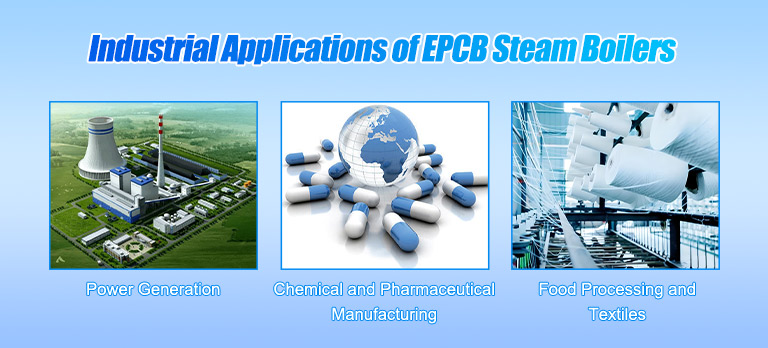
Power generation:
In thermal power plants, the high-pressure and high-temperature steam generated by steam boilers directly drives the turbine to rotate, thus driving the generator to output electric energy. This steam-driven power generation form is the core mode of traditional coal-fired power plants and natural gas combined cycle power plants.
EPCB can provide high-pressure steam boilers for small and medium-sized power stations and distributed energy stations, support steam turbine power generation, have fast start-stop ability, adapt to peak-valley load regulation, and be compatible with various fuels such as gas, heavy oil and biomass, so as to improve the flexibility and economy of energy utilization.
Chemical and pharmaceutical manufacturing:
In the chemical and pharmaceutical industries, steam is the core of temperature control in many key processes:
Chemical synthesis: continuous and stable high-temperature steam is needed to control the reaction rate;
Sterilization: Sterilization of equipment, pipelines and raw materials depends on high temperature of steam;
Drying and evaporation: at the end of finished product production, steam is used to evaporate the solvent or dry the material.
The boiler solutions provided by EPCB in pharmaceutical and other industries pay attention to steam quality (high dryness and stable pressure), accurate temperature control and compatibility of control system with pharmaceutical level verification requirements (such as GMP), so as to ensure compliance with high industry standards.
Food processing and textiles:
In the food industry, steam is widely used for:
Cooking, sterilizing and cleaning;
Brewing, concentrating, and preserving heat;
Equipment cleaning (steam disinfection in CIP system).
In the textile industry, steam plays a role in the following links:
Dyeing and fixation of yarns and fabrics;
Pre-shrinking and finishing of fabric;
Preheating and drying of production equipment.
The skid-mounted steam boiler system provided by EPCB is especially suitable for textile factories and food processing lines. It has the advantages of convenient installation and rapid deployment, fast steam output response and flexible adjustment, and can choose environmental protection fuels such as gas and biomass to meet increasingly stringent emission standards.
Comparison Table of Industry Applications and Advantages
Industry type | Main steam use | EPCB solution advantages |
Power generation industry | Pushing the steam turbine and driving the generator | High-pressure boiler design, fast response and stable high-temperature steam output |
Chemistry/pharmacy | Reaction heating, sterilization and evaporation drying. | Precise control, steam cleaning, supporting automation and GMP. |
food processing | Cooking, sterilizing, concentrating and cleaning. | Gao Qian steam, food-grade pipeline material, rapid steam production. |
Textile printing and dyeing | Dyeing, ironing, preshrinking and drying. | Strong heat load matching, energy-saving design and strong continuous steam supply capacity. |
Operation and Maintenance Best Practices
Start and Close the Program
Correct start-up and shut-down operation flow can avoid equipment damage caused by temperature or pressure change, and it is also a key step to prevent accidents.
【 Boiler startup steps 】:
Inspection preparation: make sure that the water level is normal, the fuel is sufficient, the power supply and gas source are normal, and the safety accessories are in good condition;
Start the water supply system: start the feed pump to ensure that the boiler has enough water level;
Pre-ventilation: the furnace is purged by a fan to remove residual combustible gas;
Ignition start: ignite in sequence to confirm the flame stability;
Slow pressure increase: gradually heat through the combustion controller to prevent damage caused by excessive expansion;
Steam output: Connect the main steam pipe network and supply gas only after the pressure is stable.
【 Boiler Shutdown Steps 】:
Stop fuel supply: turn off the burner;
Slow depressurization: keep the blast running and slowly reduce the furnace temperature;
Cut off the main steam valve: close the steam supply pipeline to avoid backflow;
Sewage cleaning: sewage operation can be carried out if necessary;
Cut off power and gas: turn off the power supply and gas valve to ensure that the boiler is in a safe standby state.
Periodic maintenance requirements
Regular maintenance can significantly reduce boiler failure rate, improve combustion efficiency and ensure the safety of operators. EPCB recommends the following maintenance cycles:
Maintenance project | Recommended frequency | explain |
Cleaning and inspection of water level gauge | weekly | Keep the reading accurate and prevent false water level caused by dirt. |
Safety valve function test | monthly | Ensure that the pressure can be released in time in case of overpressure to avoid explosion. |
Burner debugging | monthly | Adjust the air/fuel ratio to improve combustion efficiency and reduce carbon emissions. |
Sewage treatment (bottom sewage) | Every day/as the case may be | Prevent boiler water from scaling and maintain steam quality. |
Inspection of pipes and flanges | monthly | Check whether there is leakage or corrosion, and tighten or replace it if necessary. |
Descaling and cleaning of heat exchanger | Every quarter | Improve heat transfer efficiency and reduce energy consumption. |
Control system test | Every quarter | Check the running status of automation devices such as PLC, temperature controller and pressure sensor. |
EPCB provides operation manual and maintenance manual, and can arrange online training or remote technical guidance to ensure users' standardized maintenance.
Troubleshooting of Common Problems
In daily operation, the following are the most common problems encountered by operators, and EPCB provides you with concise fault diagnosis suggestions:
The boiler cannot start or stop automatically.
Check the power supply and PLC status.
Check whether the water level is too high/too low, or safety protection is triggered.
Check whether the gas pressure or fuel supply is normal.
Insufficient combustion (black smoke/abnormal noise)
Check whether the air-fuel ratio setting is appropriate.
Clean the burner head and nozzle to prevent carbon deposition.
Check whether the blower fan is operating normally.
Poor steam quality (high water content/pressure fluctuation)
Check whether the water level control system is accurate.
Check whether the steam pipeline has poor thermal insulation or reflux design problems.
Check whether the main steam valve is frequently opened and closed, resulting in fluctuation.
Boiler temperature rises slowly and efficiency decreases.
Whether scaling on the heat exchange surface affects heat conduction.
Check the exhaust temperature to determine whether there is energy loss.
Check whether the burner and fuel injection are sufficient.
When encountering complex problems, EPCB customer service and after-sales support team can respond quickly through remote diagnosis system and on-site service to ensure the stable operation of the boiler.
Conclusion
As the core equipment of energy conversion, steam boiler not only plays a vital role in improving industrial production efficiency, but also plays an increasingly important role in promoting the transformation of various industries to low carbon and energy saving. From fuel combustion to heat energy transfer, from steam generation to system integration, it bears the thermal heart of many industries such as manufacturing, power generation, chemical industry, food and so on.
As a leading manufacturer of industrial boilers, EPCB has always been committed to designing more reliable, efficient and sustainable boiler solutions. Whether it is a customized system for complex working conditions or fuel diversity support for future energy structure adjustment, EPCB constantly pushes the limits of technological progress and energy efficiency with its engineering expertise and industry insight.
If you are looking for a steam boiler solution that can improve operating efficiency, reduce energy costs and meet environmental protection standards, welcome to learn more about EPCB products and services. Let's work together to create a smarter, greener and more competitive industrial future.
FAQ
What is the main function of steam boiler in industrial environment?
Steam boiler generates high-pressure steam by heating water, which provides necessary heat energy for manufacturing, chemical industry, electric power, food processing and other industries, and is an important power source for driving equipment, maintaining process flow and realizing temperature control.
How to save energy for industrial steam boilers?
Energy saving is mainly achieved by optimizing combustion efficiency, adopting efficient heat exchanger, using intelligent control system and integrating waste heat recovery device, thus reducing fuel consumption and heat loss.
What are the different types of industrial steam boilers?
Common types include:
Fire-tube boiler: suitable for low and medium steam demand scenarios, with compact structure and stable operation;
Water tube boiler: suitable for high pressure and large capacity occasions, with fast heat transfer and response;
Electric boiler: no emission, low noise, suitable for places with high cleanliness requirements such as food and pharmacy.
How to improve boiler efficiency with heat exchanger?
The heat exchanger reduces the heat loss by transferring the heat generated by combustion to water to the maximum extent. EPCB adopts high thermal conductivity material and multi-return design to improve heat exchange efficiency and response speed.
What are the safety functions of industrial steam boilers?
Including but not limited to:
Automatic water level monitoring and protection
Overvoltage protection (safety valve)
Temperature and pressure alarm system
Flameout protection of combustion system
PLC intelligent control and remote fault alarm
How to improve boiler efficiency by waste heat recovery system?
Waste heat recovery systems, such as economizer, air preheater and condensate recovery device, can recover waste heat from flue gas or drainage, which can be used to preheat boiler feed water or air, improve overall thermal efficiency and reduce energy consumption.
What are the main considerations in choosing boiler fuel?
The main factors include:
Energy density: for example, natural gas has high energy efficiency;
Emission characteristics: whether it complies with environmental regulations;
Availability and cost: the stability of local fuel supply;
Application scenario: requirements for cleanliness, calorific value and combustion control.
How does the steam boiler support various industrial applications?
Steam can be used to drive turbines to generate electricity, chemical synthesis reaction, sterilization and drying, food cooking and textile dyeing and finishing. EPCB provides various types and configurations to meet the process requirements of different industries.
What are the best practices for operating and maintaining steam boilers?
Start-stop operation should be carried out according to specifications to avoid temperature difference impact;
Regularly check the water level, pressure, combustion system and control device;
Clean the heat exchanger to remove scale and maintain efficiency;
Test the safety valve and alarm system to prevent failure;
EPCB provides detailed operation and maintenance manuals and remote technical support.
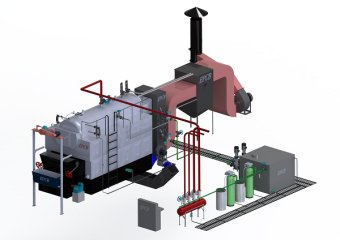 Steam Boiler
Steam Boiler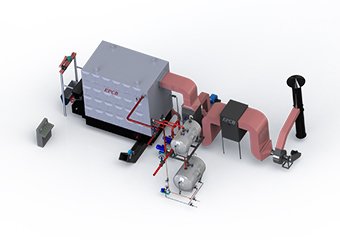 Thermal Oil Boiler
Thermal Oil Boiler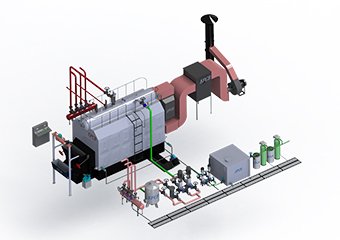 Hot Water Boiler
Hot Water Boiler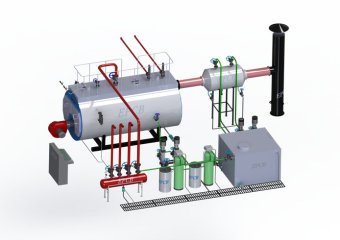 Steam Boiler
Steam Boiler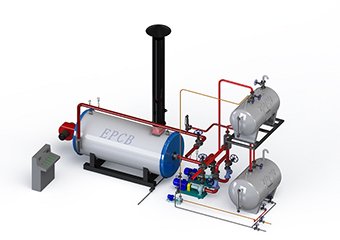 Thermal Oil Boiler
Thermal Oil Boiler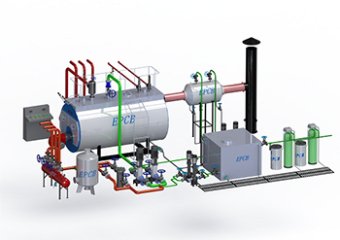 Hot Water Boiler
Hot Water Boiler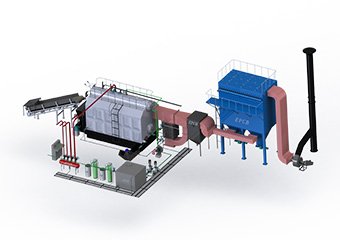 Steam Boiler
Steam Boiler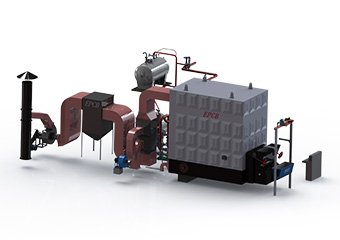 Thermal Oil Boiler
Thermal Oil Boiler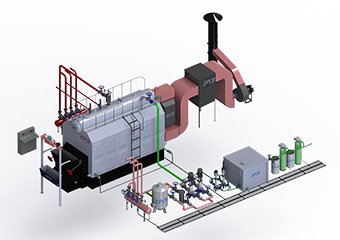 Hot Water Boiler
Hot Water Boiler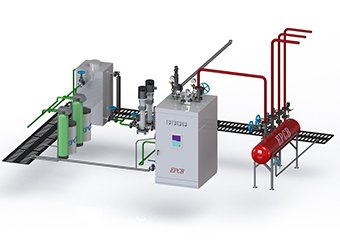 Steam Boiler
Steam Boiler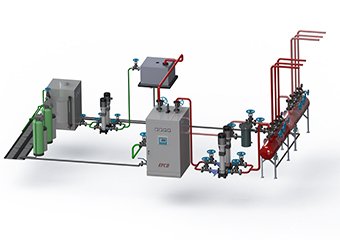 Hot Water Boiler
Hot Water Boiler




















